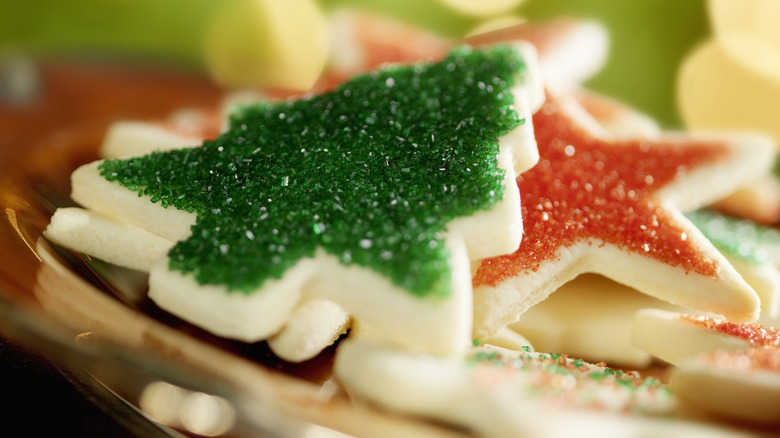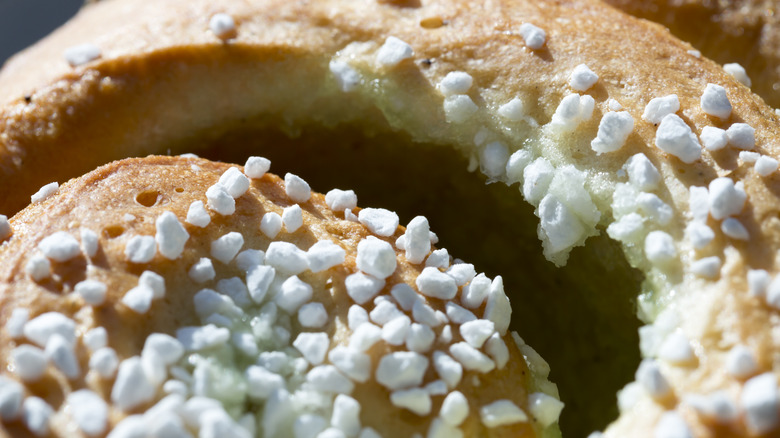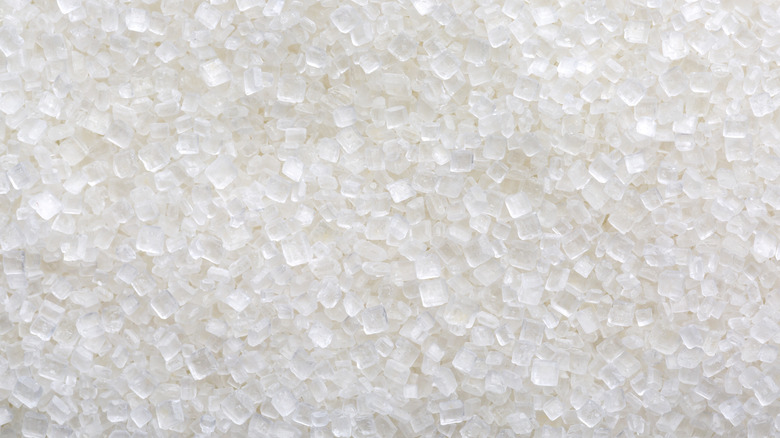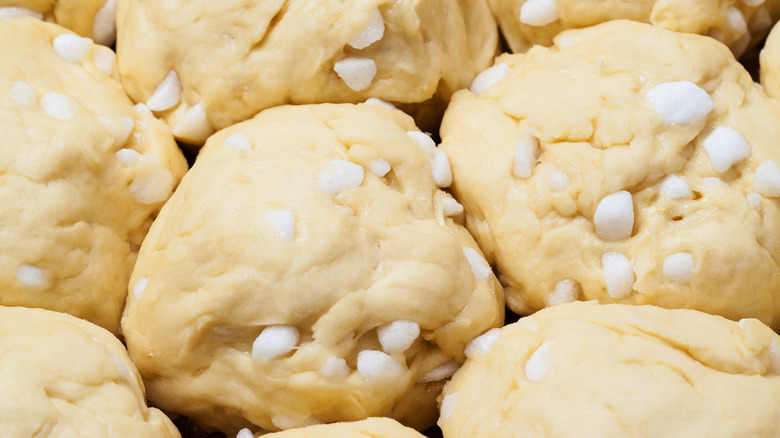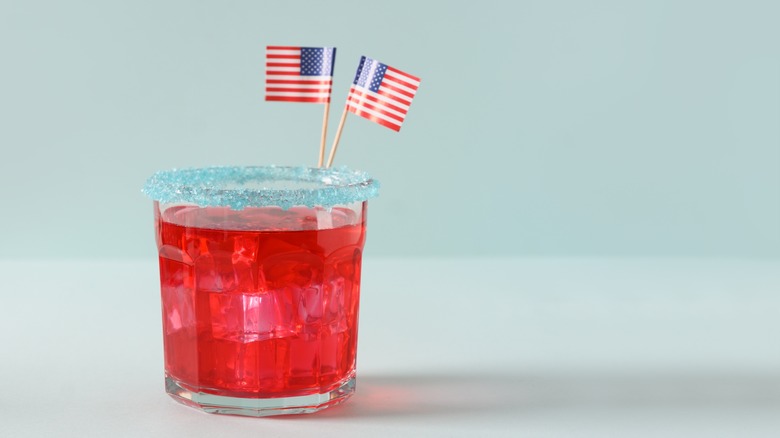The Difference Between Pearl And Sanding Sugar
Sugar is a keystone ingredient in many desserts, from sweetening up a plate of fudgy brownies to putting a glossy, caramel sheen on top of a classic crème brûlée. In addition to giving sweets the trademark flavor and texture we all know and love, certain types of sugar are also used to create beautifully aesthetic decorations atop cookies, cakes, and more. With so many kinds of sugar to sift through, however, it can be difficult to tell them apart.
Pearl sugar and sanding sugar are two of the varieties of sugar used for decorating. Don't let their names fool you, though; while they sound similar, these confectionery ingredients are distinct in several ways. They have individual appearances, different textures, and they tend to be used to achieve entirely unique effects when baking. Read on to learn what separates these decorative sugars from one another and how to best use each of them.
What is pearl sugar?
Pearl sugar is a type of decorative sugar that is popular in European baking, especially with treats that come from Scandinavia. It is made one of two ways, either by boiling down a sugar syrup and allowing sugar crystals to form, or by shaping a dough made from ground sugar and water. The result of these production methods is a crunchy topping with a high resistance to heat that will add an extra layer of textural interest to any sweet in which it is used.
When you're on the hunt for pearl sugar you'll find two different types: a Swedish version and a Belgian version. The difference between the two types largely comes down to size and their usage in the respective cuisines. Note that pearl sugar should not be confused with yet another similarly named kind of decorative confection, sugar pearls. Sugar pearls are the shiny, spherical sprinkles you find on more luxurious-looking cakes.
What is sanding sugar?
Sanding sugar is a decorative sugar that consists of large granulated crystals that are often brightly colored. It was originally created in the early 1900s, when it was made by grinding down sugar into coarse yet evenly sized granules. The origin of its name is up for debate. While some sources imply that it is named after the grinding — or sanding — technique used to create it, others say that the term is related to instances of merchants adding actual sand into the mix to get more money from shoppers with less product.
Like pearl sugar, sanding sugar is valued for its high heat resistance and its aesthetic appeal. It is quite common to see this type of sugar donning deserts in American bakeries, especially on items like cookies. Sanding sugar is not to be confused with sparkling sugar, which has an even larger grain size, or with turbinado sugar, which is a minimally processed sugar also used for decoration on occasion.
Pearl sugar comes in large chunks
The most noticeable difference between pearl sugar and sanding sugar is their appearance. Pearl sugar is significantly larger than sanding sugar, and has a rustic whimsy to its aesthetic. The pearls are oblong but imperfect in shape with no two looking exactly the same, and they are always a creamy white color. The texture of pearl sugar is crunchy but light.
Sanding sugar, on the other hand — despite having a larger grain than granulated sugar — has smaller individual crystals when compared to pearl sugar. Rather than feeling rustic and handcrafted, this sugar's appearance is far more uniform and refined. The crystals themselves are shiny, translucent, and reflective of light, giving the sugar a sparkling effect. Sanding sugar can come in a wide variety of colors as it is often coated in dye during its making. The texture of this sugar is also crunchy, but it is more dense than pearl sugar.
Sanding sugar is used for dazzling displays
Given their distinct appearances and textures, the two sugars are used to decorate in slightly different ways. The uniformity and bright colors of sanding sugar, as well as its glittery effect, makes it perfect for adding a show stopping splash to cakes, cookies, and other confections. You can also use it as a tool for prettier plating and presentation; for example, try rimming a cocktail glass in this sugar for a shimmery drink that everyone will love. That said, sanding sugar should not be mixed into desserts, as this will defeat the aesthetic purpose of the decorative grain and give whatever you are making a gritty texture.
Meanwhile, pearl sugar has a handmade, homey visual appeal with its rough shape and humble coloring. Its crispy, light texture makes it a perfect decorative topping, as it will also contribute a nice mouthfeel to each bite. Many people sprinkle pearl sugar over buns, pastries, and other breakfast foods for this reason. The texture of pearl sugar also makes it popular for incorporating directly into doughs and batters, creating sweet crunchy pockets that surprise and delight those eating the resulting baked goods.
